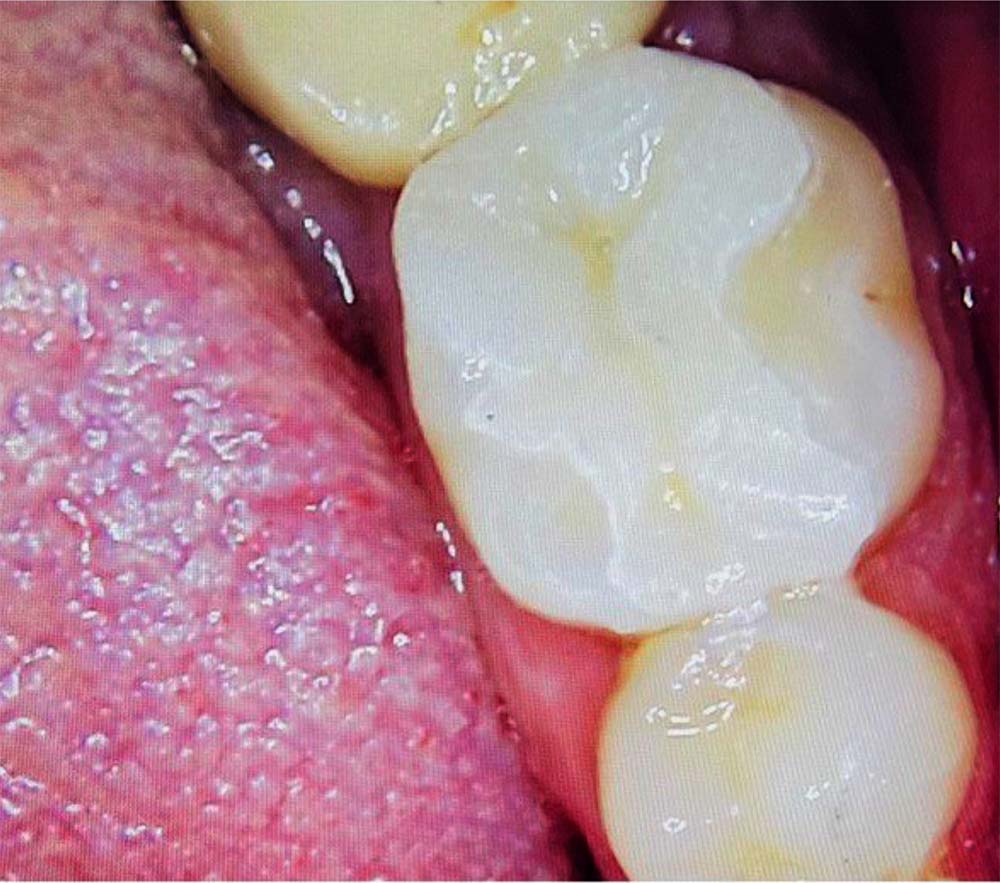Dental Inlays and Onlays
Are your teeth damaged from cavities? Wondering whether to opt for a filling or a crown?
At ADW Center clinic, we restore teeth using non-metallic constructions. We employ Dental Inlay and Onlay procedures to preserve as much healthy tissue as possible.
We serve the Fort Lauderdale area and beyond, offering a comfortable treatment environment tailored to each patient's unique needs.
What are Dental Inlays and Onlays?
Dental inlays and onlays are dental prostheses used to repair teeth damaged by cavities. They are employed as an alternative to fillings and crowns for moderate damage. These constructions are typically crafted from materials like porcelain, E-max ceramic, or zirconia. These materials are known for their durability and natural appearance, closely resembling natural enamel.

Inlays and onlays offer three important advantages:
- Durability: Composite fillings can be too fragile to restore the contact points of a tooth, and they can deteriorate quickly with chewing. In contrast, inlays and onlays are made from robust materials capable of withstanding the pressure from biting and jaw closure.
- Seamless Fit: Composite fillings often leave microscopic gaps between the filling material and the enamel, creating spaces where harmful bacteria can accumulate, potentially leading to the development of cavities and enamel decay around the filling. Inlays and onlays are custom-fitted and secured with dental cement, ensuring a seamless fit without such gaps.
- Materials: Inlays and onlays are typically made from materials like E-max ceramic, which is strong, long-lasting, and resistant to discoloration and pigment staining over time. Zirconia, another material used for these restorations, is free from metal impurities, making it suitable for patients with allergies or autoimmune conditions.
Are inlays and onlays the right choice for you?
This method of restoration is suitable when:
-
The enamel in the chewing surface area is damaged.
-
The tooth's surface is uneven, making it difficult to create a traditional filling.
-
The cutting edges of the teeth are damaged.
-
One of the walls of a tooth is compromised.
-
Enamel wear is occurring unusually quickly.
-
30-60% of the enamel is damaged due to cavities or injury.
Quality Inlay and Onlay Placement in Fort Lauderdale
We approach tooth reconstruction with care, and minimizing the removal of enamel to maintain strength. We use two methods for taking impressions: scanning technology and traditional impression materials.

Boris Lipovetskiy
Dentist with 30 years of experience
Metal Fillings vs Dental Inlay Onlay
Inlay and onlay procedures offer tooth-colored alternatives to metal fillings. Allow for the preservation of healthy teeth tissue, unlike the extensive enamel removal required for crown placement. For instance, if only one wall of a tooth is damaged, fixing a crown would still involve trimming enamel from all sides, potentially weakening it and risking further deterioration.
Inlays are suitable for addressing damage or trauma to the inner portion of a tooth, typically within the cusps. To install an inlay, the dentist removes the affected tissue, takes an impression, creates the inlay based on that impression, and then secures it with dental cement.

Onlays are suitable for addressing advanced stages of decay or significant damage to a tooth. They are used when a large portion of the tooth's surface is compromised, either to strengthen the cusps.
The dentist trims away the damaged tissue while preserving the healthy portions. They then take an impression, create an onlay that matches the tooth's anatomical shape based on that impression, and secure it with dental cement.

Crowns are suitable for the restoration of a tooth that is extensively damaged, typically around 70-80%. In such cases, the dentist reshapes the tooth significantly, including the removal of a substantial portion of enamel.
On the other hand, onlays are used for restoration when preserving a significant amount of healthy tooth tissue is possible. The dentist removes only the damaged enamel. This approach reduces the risk of further enamel deterioration and helps prevent infection from reaching the root canals.
Stages of Inlay and Onlay Placement
The dentist assesses the condition of the teeth and gums, inquires about any underlying medical conditions (allergies, autoimmune diseases). This information helps in selecting the restoration method and material.
During the first visit, the dentist takes an X-ray of the jaw to evaluate the extent of damage and determine the appropriate restoration method.
The specialist removes damaged tissue, takes an impression using a scanner or traditional molding material, and places a temporary filling to fill the cavity. Based on the impression, the dentist creates the inlay or onlay.
On the second visit, the dentist removes the temporary filling, applies dental cement, and secures the restoration in place.
The dentist evaluates the quality of the restoration's attachment. If the patient exhibits signs of bruxism (teeth grinding), the dentist may recommend treatment and the use of special caps to protect the restoration from increased chewing pressure.
FAQ
The dentist only trims damaged tissue, avoiding areas near the tooth nerve. In cases of heightened sensitivity, local anesthesia is used.


